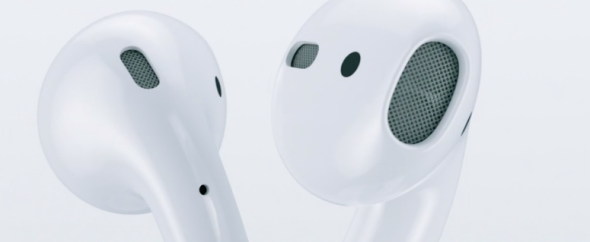We’ve reached the point in the iPhone’s evolution where the latest generations are more notable for features they don’t sport than for any they do.
Apple on Wednesday announced the iPhone 7 and iPhone 7 Plus, and as expected, they look a lot like their immediate predecessors. Also as expected, based on a preponderance of credible rumors: They’re the first iPhones to dispense with an analog headphone jack.
In place of the venerable 3.5mm port, Apple proposes two alternatives.
First, the new phones will come boxed with a set of earbuds that connect via the Lightning port, as well as an adapter for your old headphones. Yes, the Lightning port is the same one you use to charge the phone. Yes, that means you won’t be able to charge the phone and listen to headphones at the same time.
Second, Apple will begin pushing wireless earbuds, which you’ll have to buy separately if you want them. Conveniently, Apple now owns Beats, which specializes in making headphones, a new line of which will be wireless.
Conveniently for them, I mean. Not for you.
Apple will also launch its own brand of wireless earbuds, called Airpods. (I was rooting for Airbuds.) These come with a chip that Apple says will allow them to switch seamlessly between your iPhone and Apple Watch, and to pair with your devices without the hassle of Bluetooth. These will set you back $159, or “just $159,” as Apple VP Phil Schiller halfheartedly put it. They look nifty, and they just might be the future, if for no other reason than that Apple has decreed them thus.
Apple’s own explanation for the change was a little baffling. Schiller said the rationale for jettisoning the headphone jack could be summed up in one word: “courage.” What kind of courage? “The courage to move on, and to try something new that betters all of us,” he elaborated. OK then!
For the most part, though, we knew or suspected all of this going into Wednesday’s event. So for those mourning their soon-to-be obsolete headphones, the real question was: What would Apple offer in exchange?
Well, for one thing, you can now drop your iPhone in the toilet. I mean, you could do that before, but now when you get it back out, there’s a decent chance it will continue to function. Eliminating the headphone jack enabled Apple to seal the phone at last, making it “dust and water resistant,” albeit not fully waterproof.
Meanwhile, the iPhone for the first time will have stereo speakers, a feature that will be welcomed by the kind of oblivious jerks who walk around with their phone’s sound turned on.
For those who have no plans to either drop their phone in the toilet or annoy passersby by blasting One Republic, the iPhone 7 and 7 Plus will also come with more than the usual performance upgrades.
They’re powered by a new, four-core processor that Apple calls the A10 Fusion. Two high-performance cores will offer a step up from Apple’s previous A9 chip, while the other two cores will be optimized for power efficiency, saving battery when you run apps that don’t require peak performance. An Apple-designed “performance controller” will take on the task of shifting the load between those cores.
Apple has also invested heavily in the new phones’ cameras, adding dual 12MP rear-facing cameras to the 7 Plus, which will work in tandem to offer 2x optical zoom, along with 10x digital zoom. Optical image stabilization, previously limited to the 6 Plus, will be included in both the 7 and 7 plus. The flash is brighter, and a new “image signal processor” with will help to automatically adjust your photos for various conditions. Apple calls it a “supercomputer for photos.”
In other news, the home button will no longer click. Instead, it will be a solid-state button with “taptic” feedback, a technology (and neologism) it borrows from the Apple Watch. Basically, you’ll feel a little tap when you push hard enough to register the equivalent of a click.

Screenshot via Apple.com
Apple says the new iPhones will also offer an extra hour or two of battery life, aka “the longest battery life ever on an iPhone,” in Apple’s breathless parlance.
It adds up to what inevitably feels like another underwhelming iPhone launch. It’s worth remembering, though, that it’s already a remarkable device, and totally reinventing it every 365 days would be crazy. Incremental upgrades are still upgrades, and a better processor and camera will probably make more of a difference to the average iPhone user than any number of flashier gimmicks the company could have introduced.
Not that Wednesday’s event was without flashy gimmicks, although they skewed retro, as with the announcement of the first Mario game for iOS and the coming debut of Pokémon Go on the Apple Watch. The watch itself came in for its own round of upgrades, which my colleague Jacob Brogan has covered here.
But the iPhone 7 won’t be remembered primarily as the one that introduced the dual rear camera or the A10 Fusion chip or the taptic home button, nor even as the first iPhone to prove toilet-worthy. Rather, it will be remembered in one of two ways: the device that killed wired headphones for good—or the one that tried and failed.
